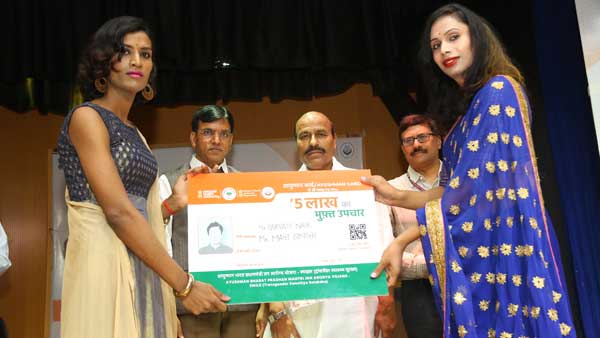
What Can We Do For Sustainable Fashion?
[ad_1]
It is more than just slowing down fast fashion.
For many millennia, what we wear is an important part of our lives. Evolving from simply protecting our bodies, clothes have become an indicator of culture, profession and even social standing; and lately, as a means of self-expression as well. As such, fashion touches everyone on the planet, quite literally, and we may even call it our second skin.
Thanks to industrialization and the advent of fast fashion, fashion is now more widely accessible and affordable than ever before. Nonetheless, it has also made the fashion industry one of the most polluting in the world. Not only is it the second-largest consumer of the world’s water supply, but the fashion production process is responsible for 10% of our carbon emissions. As reported by United Nations Economic Commission for Europe in 2018, 85% of textiles go to landfills every year.
In recent times, awareness around climate change and environmental degradation is gaining prominence. Sustainable fashion, therefore, has been gaining momentum in the industry, showing the world that we don’t have to sacrifice sustainability for fashion. From using eco-friendly fabrics to re-learning how to wash our clothes, there is so much we can do to be fashionable in a responsible manner.
Traditional textiles over synthetic fibers
Synthetic fibers are commonly used material for making clothes nowadays. The reasons are simple—they are cheaper and easier to clean and store. They can also last a really long time—perhaps too long. The majority of synthetic fibers that we use on a day-to-day basis, like rayon, nylon, pleather (synthetic leather) and polyester, are plastic-based, meaning they are non-biodegradable and can stay in the ground for hundreds of years without adequately breaking down. Fabrics, like faux furs, while extremely stylish, can be major pollutants, sending microplastic into waterways with every wash.
In light of this, designers around the world are working in tandem with artisans and craftspeople to create quality fabrics using traditional techniques entrenched within various cultures. Indian designers, for example, have been putting more and more emphasis on reviving the rich hand loom traditions across the country by incorporating artisan-made fabrics into their collections. Not only does this support artisan communities and art forms at risk of extinction, but it is also more environmentally friendly. It is because these traditional fabrics are created using predominantly natural and biodegradable materials with little to no use of modern industrial machinery.
Some major examples of hand loom revival efforts by Indian fashion designers include: Ritu Kumar’s Banaras Revival Programme, Anita Dongre’s collaboration with NGOs (e.g. the Self-Employed Woman Association) supporting independent groups of artisans, Sabyasachi Mukherjee’s Save the Sari Project, etc. Using traditional, sustainably-made fabric on an international scale can go a long way in changing perceptions and spreading awareness.
Recently, there have also been efforts to create sustainable synthetic fabrics, like apple eco-leather, fish leather, pineapple leather, mushroom leather etc. Currently, producing these fabrics is time-consuming and expensive, and thus they are not readily available to the public yet. However, with experts working tirelessly to refine formulas and techniques, they might become more accessible to everyone in the near future.
The vintage fashion resurgence
The recent shift towards sustainability has put the spotlight on vintage fashions. The rising awareness and acceptance of “pre-loved” or second-hand clothing has given rise to the popularity of the “thrifting” culture. This trend is particularly popular among millennial and Gen-Z fashionistas who are creating funky new pieces for their wardrobes by upcycling their thrifted finds. Some of the vintage trends that are making a huge comeback are athleisure, chunky knits, corsets and baguette bags.
Buying vintage gives a new lease of life to objects and saves them from being sent to landfills. Many retro finds can also be significantly cheaper than buying brand-new items, making self-expression less of a burdensome expense. Especially for high-end vintage items, most of them are still in good condition, as they were meant to last the wearer for as long as possible under proper care. With secondhand clothing meeting one’s fashion needs, the demand for new, fast-fashion clothing reduces, which by extension lowers the strain on our valuable resources used to produce them.
Quality and maintenance over quantity and disposal
Fast fashion is an appropriate moniker, considering how quickly trends whiz by in this day and age. The rate at which trends change has made fashion a disposable commodity. After all, fast fashion is really cheap by using fabrics of significantly inferior quality—and of course, exploiting workers. Also, they aren’t designed to last beyond their intended “season”. This deterioration of quality apparel, as well as the taboo of being “out of fashion”, translates to high rates of consumerism, causing people to buy more cheap, low-quality clothing to replace the those people already have in their wardrobes. It’s a vicious cycle that is difficult to break.
One of the key aspects of sustainability is not just buying items made sustainably but also maintaining items we already own. In the case of fashion, this is where the oft-ignored wash instruction label comes into play. Understanding how to store and clean your garments can significantly extend their shelf life, allowing you to get more wears out of them over a long period of time while still looking presentable. For instance, avoid tumble drying your clothes, as it can shrink and damage the fabric. It also saves electricity because dryers are very energy-intensive, with an average of 4 kWh of energy consumption while producing 1.8 kg of carbon dioxide.
Reducing the number of washes for a piece of clothing can also slow down the breakdown of fibers in the garment. A regular cotton t-shirt can be worn up to three times before needing to be washed. A general rule of thumb can be to wash clothes when they are either stained or smelly. Some ways to keep clothing from smelling are to put it in the freezer or hang it out under the sun for some time.
The fashion industry’s continuous and rapid evolution, along with the ability to mold itself to circumstances, has inspired many young people to take the world by storm—and look absolutely fabulous while doing so. Yet, we cannot turn a blind eye to what the industry and our habits have done to the environment, especially when we see so many heartbreaking natural disasters happening around the world in just the first half of 2022. While shopping sustainably for clothes isn’t going to solve the problem once and for all, being mindful of our impact from fashion consumption on the environment is still a good place to start.
Also read:
Banner image courtesy Freepik
[ad_2]
Source link


